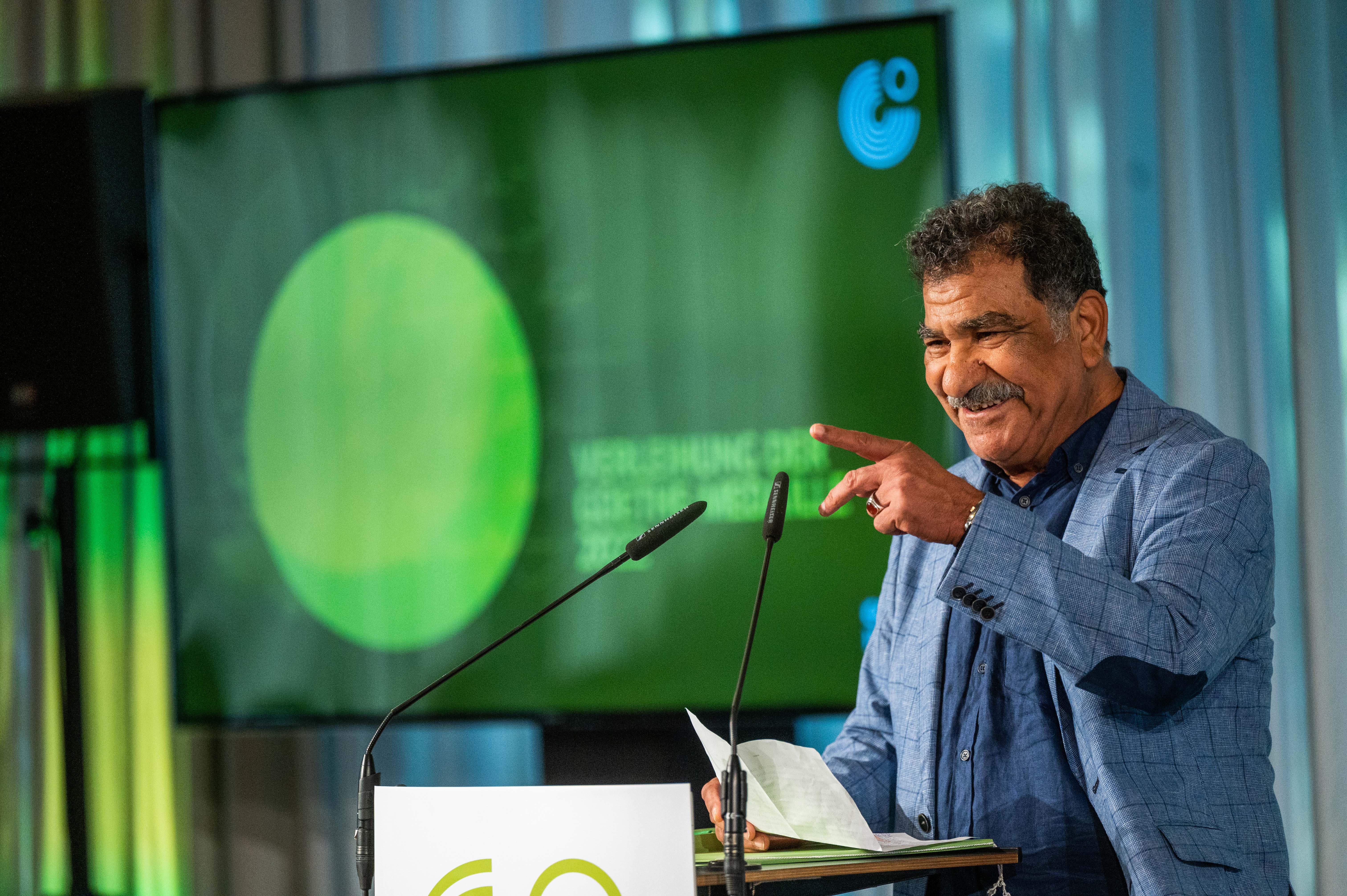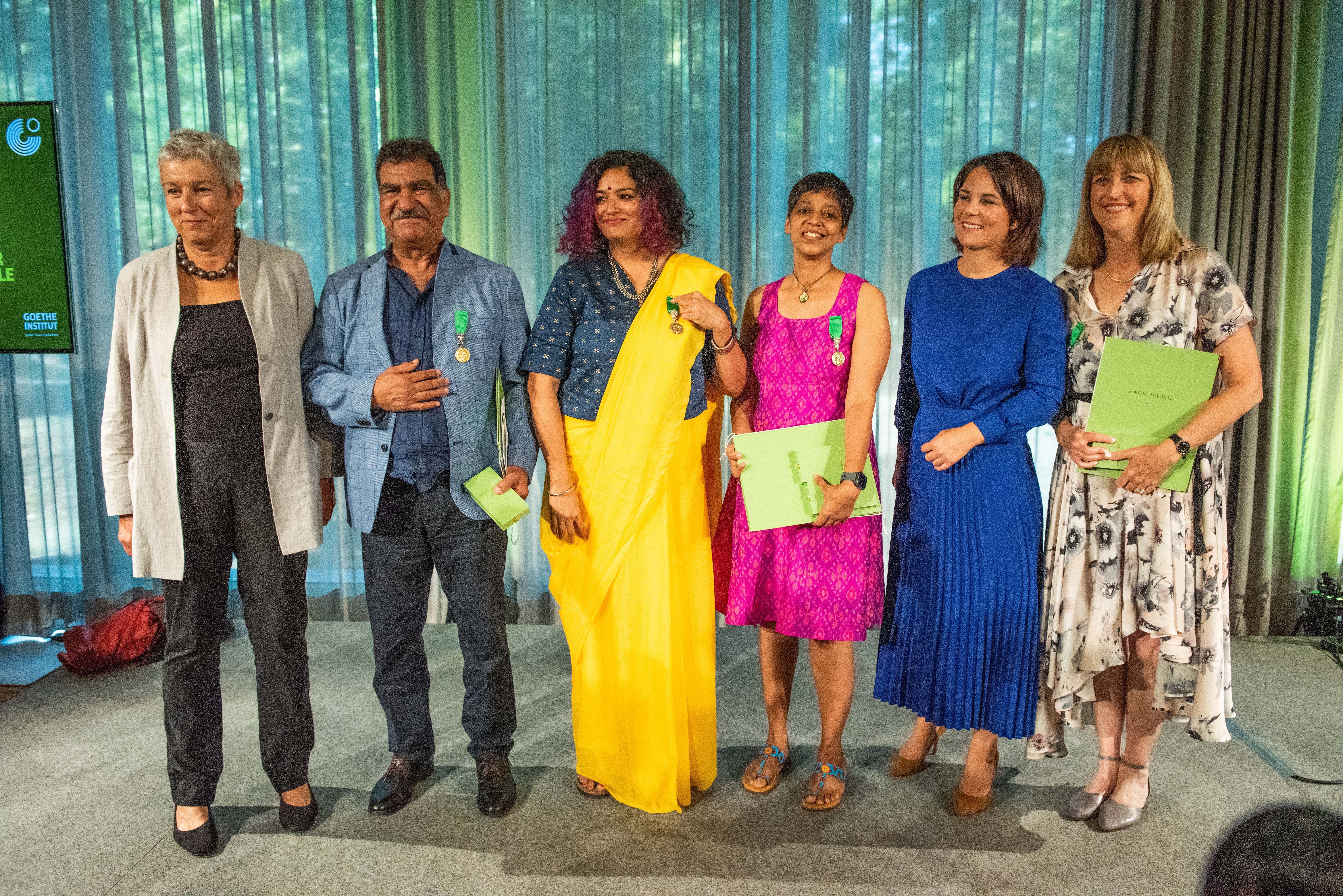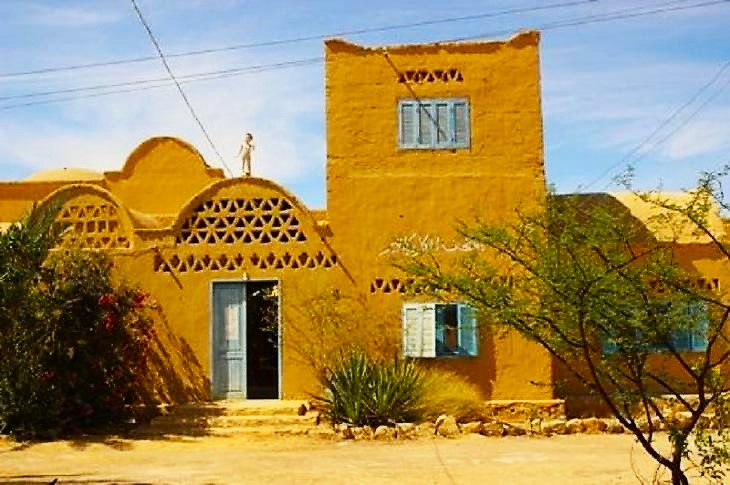Telling stories through art

It is almost impossible to adequately describe Mohammed Abla’s extensive life’s work in a few words. Born in 1953 in Mansoura, a city in the Nile delta, he studied art in Alexandria in the early seventies and has been active as a visual artist for nearly fifty years – not just in Egypt, but also in Europe, where he first spent a significant amount of time in 1978.
He is still represented in Europe by Galerie Hohmann in Walsrode, which discovered him in the late seventies and has brought out a retrospective catalogue of his work, which is now accessible online.
"The Arab Picasso"?
Explaining Mohamed Abla’s rich body of work to a European audience is a task akin to introducing the work of Pablo Picasso to an oblivious audience in 1960. In fact, probably only Picasso’s oeuvre is as broad, varied and socially engaged as Mohamed Abla’s. All the same, it would be nonsensical to compare him with Picasso by saying, for example that he is “the Arab Picasso”.
The only appropriate way of comparing the two would be to say that Picasso was “the European Mohamed Abla”. And perhaps at some point in the future, people will use that comparison to help art students in the Arab world understand European art history.
If at that point someone should ask who Picasso was and be told that he was “the European Mohamed Abla”, everyone will understand what is meant by it: that he was an artist who is, properly speaking, beyond compare.

In dialogue with the times
Any attempt to do justice to Mohamed Abla’s fifty years of creating art will not be aided by the popular idea of artistic growth and development: to speak of his “career” implies that we are able to differentiate between finished and unfinished, mature and juvenile. It assumes that a body of work has an unalterable core from which it develops, an absolute, original “identity”. Mohamed Abla’s work is immune to such essentialist concepts.
His work is in constant dialogue with the changing times, always seeking new answers and always bringing out surprising resonances. Its twists, turns and refractions make it a mirror of Egyptian society. But Abla’s work is anything but a megaphone for an inflated ego to yell into, to impress his worldview on everyone. Nor does it conform to the current fashion for performative activism or tugging at heartstrings, no matter how socially and politically engaged Mohamed Abla is.
The artist as storyteller
The art that Mohamed Abla has painted, shaped and moulded over the past five decades has an epic quality about it. He tells stories. In conversation, the artist always says that these stories are what inspire his images. We often find writing in his pictures, collages made from newsprint, scraps of paper, quotations and slogans. But contrary to what the cliches of Arab art might lead us to expect, they are not calligraphy, and Western expectations are dashed.
Instead, they read like an alphabet made from the images themselves, which come together as a whole body of work to form a huge, panorama-like Zeitroman, a novel of the age in which the artist lives. In this novel of images we learn a great deal about Egypt and the southern Mediterranean, Africa, the Middle East; but we also hear echoes and sounds from Europe. We read about the Egyptian people, their times, their politics, their resistance, their perseverance, their moods, fears and hopes. Their rage and their love.
“Future Fossils”
There is an old Arabic saying: “Poetry is the divan of the Arabs”. It means that poetry functions as the Arabs’ archive, as a source of their history, their view of the world. And in the work of Mohamed Abla, art has now become the archive of the Arabs. In the 1990s, far ahead of his time, he became an archaeologist of our contaminated modern world and made a now-famous cycle of works – “Future Fossils” – that transformed rubbish he had fished out of the Nile into sculptures, works of art. They won him the main prize at the 1997 Alexandria Biennale.
With his public profile as an artist, he was able to save a Nile island and its traditional inhabitants – fishermen, ferrymen, labourers – from the real-estate mafia, who wanted to turn it into a kind of Manhattan. In 2006, he founded the Al-Fayoum Art Center in the al-Fayoum oasis outside Cairo. It includes a cartoon museum, which has created a safe space for visual commentary, criticism, satire and humour, the eternal targets of hatred for fanatics and moral apostles of every stripe, in the Arab world just as it is in Europe.
Art as archive
While the famous murals of the Arab Spring in Cairo have now almost all been painted over (could they not at least have been turned into a tourist attraction?), Mohamed Abla’s pictures of the revolution have been saved, and remain in the hands of enviable museums, galleries and art collectors.
In this, his work is helping to create a new definition of art: as what can somehow be rescued from the encroachments of reality and society, a Noah’s Ark for all that is dissenting, uncomfortable, uninterpretable, diverse, hated, outcast, resistant.
Wir brauchen die Kraft zur Erneuerung in dieser Zeit. Das @goetheinstitut schafft diese Kraft zur Erneuerung.“ & „Die Auswärtige Kulturpolitik muss ein fester Bestandteil der dt. Außenpolitik sein“ @ABaerbock bei Verleihung der Goethe-Medaillen in Weimar https://t.co/GEwHLXz5bB pic.twitter.com/nHEWqvi5uR— Johannes Ebert (@johannes_ebert_) August 28, 2022
["We need the power for renewal during these times. The @goetheinstitut creates this power for renewal." & "Foreign cultural policy must be an integral part of German foreign policy". Two quotes from German Foreign Minister Annalena Baerbock's speech during the Goethe Medal Awards Ceremony in Weimar]
In this archaeological and archivistic dimension to Mohamed Abla’s art, in his social engagement and activism, in his intervention and participation, in the pain and joy he feels for others, we recognise a luminosity, a light within this work that elsewhere has long since been extinguished. And it is no surprise to find that this light shines more intensely in Egypt that it does here. Though I am not talking here about physical light, but the metaphorical light of the mind and of revelation – artistic revelation, mind you!
Colour theory and Sufism
But since Mohamed Abla is now being awarded the Goethe Medal, we may ask what his connection is to Goethe – apart from the fact that he speaks very good German, and read Goethe early in life in Arabic translation, as he has said. Given that he is a painter, the obvious place to start would seem to be Goethe’s Theory of Colours. In the introduction, Goethe quotes the following verse:
Were the eye not very like a sun
How could we see the sun’s own light?
And were God’s strength and ours not one,
In godly things how could we find delight?
These lines were not written by Goethe himself; he only turned them into German verse. He tells us that they originate from an ancient mystic. And when we look into who this mystic was, we learn to our surprise that he was born in Egypt!

In Asyut on the Nile, to be precise, in the year 205; he was educated in Alexandria, which at the time was under Greece influence. Joining a military campaign for the Roman Emperor took him all the way to Persia, and he subsequently settled in Rome and became the founder of Neoplatonism. His name is Plotinus.
Few people today know that Plotinus was much read and translated by the Sufis – Muslim philosophers and mystics. One of the most well-known Sufis was al-Ghazali, who died in the year 505 in the Islamic calendar, 1111 in the Christian. He wrote a famous little book called The Niche of Lights (Mishkat al-Anwar), in which he gave a Sufi interpretation to the mysticism of light in Plotinus and in the Koran.
The light at the end of the tunnel
For al-Ghazali, light was more than just its tangible, physical manifestation. Rather, in his work, just as in the verse quoted by Goethe, physical light is merely a metaphor for the real, true light, the light of the mind that in turn connects us to God.
In this spiritual sense, I am convinced, Mohamed Abla paints the light at the end of the long, dark tunnel that we entered many, many years ago without truly realising it. It can only be a good sign for us that he is being awarded the Goethe Medal in these difficult times.
© Qantara.de 2022
Translated from the German by Ruth Martin
Stefan Weidner is an author and Islamic Studies scholar. This article is an adapted version of his laudation speech for Mohamed Abla, given by the author at the medal-awarding ceremony in Weimar on 28 August.